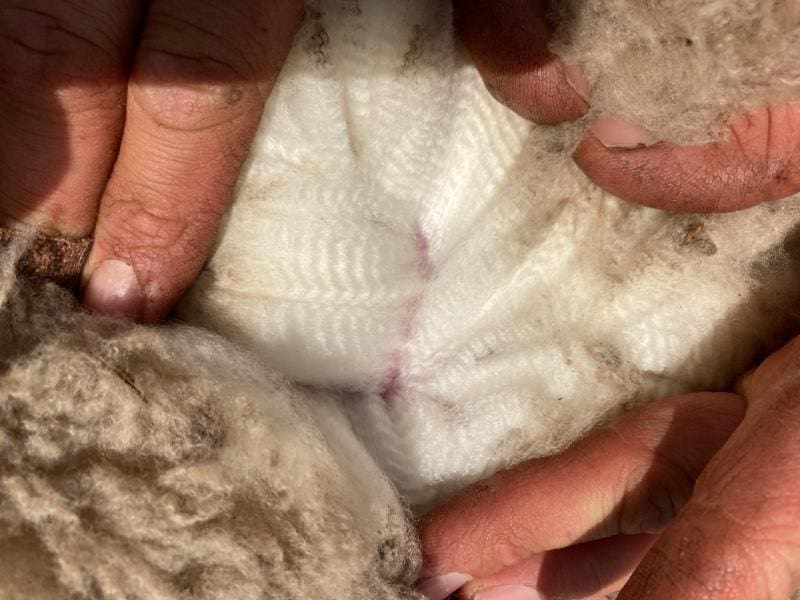
Processors are passing negative lamb skin values onto producers.
SHEEP and lamb producers have been charged up to $5 for skin disposal as depressed global enquiry for leather products and low crossbred wool values limits marketing and cost-recovery options for meat processors.
Stock agents have confirmed that processors have been charging 50 cents to $1 for skins of no commercial value for several months, but many have levied $2-$3 in recent months and up to $5 in one case reported to Sheep Central.
Some processors have tried to incorporate the unwanted skins into their internal waste management and rendering systems, but due to difficulties in breaking down skins with wool have been forced to dump them off-site, adding further costs.
Thomas Foods International is the latest processor to advise its suppliers it will be charging $3 for skins of no commercial value after delaying the decision for months.
TFI’s national smallstock manager Paul Leonard said there were difficult trading conditions for sheep meat and skins.
“It’s the reality of the market and we have borne the cost of dumping these skins for the last six months.
“We were hoping to see it turn around in the market with better demand, but it hasn’t happened and it comes to the point where the costs have got to be recovered,” he said.
“When the market recovers, and it will at some point, then it (the disposal charge) will be withdrawn.”
Mr Leonard said skin exporters did not want to fill their warehouses with the broader crossbred skins that they can’t sell.
Skin value is assessed case-by-case, but Mr Leonard said skins that still had some value included from ‘clean’ shedding sheep with no wool, from Merinos with more than than six weeks wool growth (over a quarter inch).
“The Merino skins with an inch or more wool is still unaffected.
“Most crossbred skins are unsaleable and the broader crossbred skins are most affected.”
RMA Network chief executive officer Chris Howie said the lamb skin prices were once 10-15 percent of the value of a lamb, and he is concerned that sheep and lamb skins will go the way of the cattle industry, where producers don’t get paid for hides.
“We always got paid a skin price in east, while Western Australians never got paid a skin price.
“I’m just concerned we are drifting towards the skin price disappearing.”
Vice-president of the Australian Hide, Skin & Leather Exporters Association and lamb skin exporter Luke Kivlighon said there is no demand for crossbred lamb skins around the world.
“There is no wool return on the crossbred wool, by the time they try to process it.
Mr Kivlighon said the double-face garment market was also very flat.
“There is just no joy.
“The only thing that is really making money are Merinos and they are going over to China and they are pulling the wool off them,” he said.
“The situation we’ve got here is that a few of us are taking lamb skins.
“The abattoirs are sending them into us at a ‘minus value’, but that won’t last forever, because we are filling our sheds up with stuff we can’t move.”
Mr Kivlighon said a dense wool, nice style lamb skin will still be worth processing.
“But these open wool crossbred type lambs are the ones that are going to be worth nothing or be thrown out.”
A potential buyer from China will inspect skins at his Southern Lambskins Exports operation next week. If the buyer pays the freight it will save him dumping the skins, Mr Kivlighon said.
Skin buyers are looking for a dense wool 56-58s skin with character, ideally 2.5 centimetres-plus, but 1-2 cm skins might be marketable, he said.
Merino skins – with wool a quarter inch-plus — could be priced, unless they were off-shears, he said.
“Anything from a half inch up is going into wool recovery and blend it with longer wool.
“Basically all they are after now is the wool.”
Mr Kivlighon said a lot of the crossbred lambs lacked the quality wanted and shedding sheep skins with wool were worth “absolutely nothing.”
“The hairier the better, they’ve got to be a hairy style.”
These skins went into a higher end leather market, he said.
Meat & Livestock Australia’s National Skins Report today quoted the crossbred lamb skin indicator yesterday sat at 81 cents whereas the Merino lamb skin indicator was at 975 cents.

How depressing is this kind of report? Why can’t the skins be a food for dogs or ducks or something? It’s not that hard to process, so why not? I’m guessing the Dohne sheep wool would be a better quote for wool exports right now. It’s very sad to read this, as I believe the farmer/producer is really missing out. Whatever happened to Australian-made Ugg boots? Surely this is better than the waste?